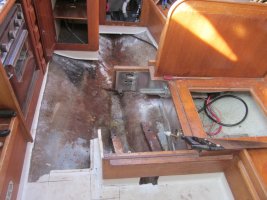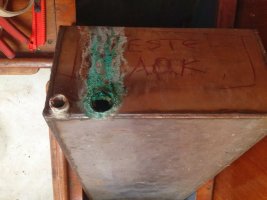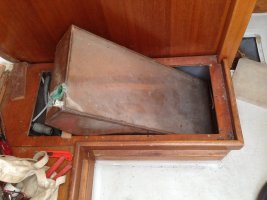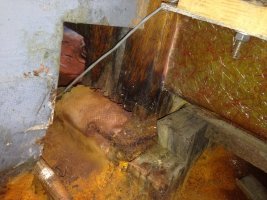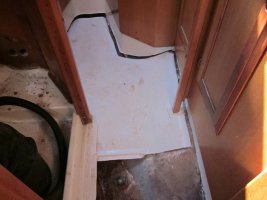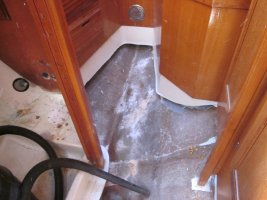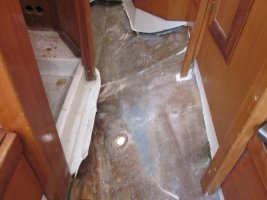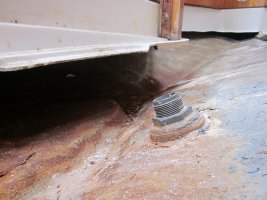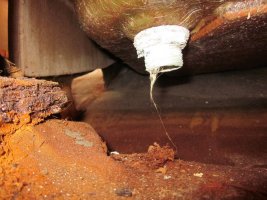The cabin sole has been a perennial problem on our 1976 35-2, with a crack extending from the bilge hatch beside the engine that made crunching sound when stepped on. Plus, my dear wife wants a saltier interior, and envies those yachts with teak & holly underfoot.
I've always wondered what was lurking down there:

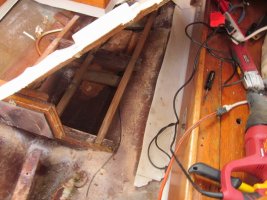
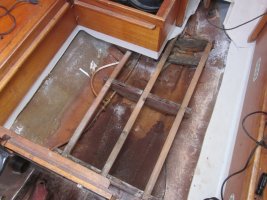
Shows what a Sawzall and a willing hand can do.
The assorted bits of lumber are flimsier than they appear, but surprisingly there was not much springiness around the settee and table base, probably due to the encapsulated 3/4" plywood. Must have been an early approximation of the Triaxial Force Grid, refined in the Mark III.
Though there was rust aplenty, it had not stained the underside of the sole so I don't think the water level had ever risen that far. However, the base of the mast compression post is a horror of decomposition that resembles a chunk of iron ore. More on that to come.
For now it is cleaning and grinding and vacuuming down to an epoxy-friendly surface, while pondering next steps.
I've always wondered what was lurking down there:



Shows what a Sawzall and a willing hand can do.
The assorted bits of lumber are flimsier than they appear, but surprisingly there was not much springiness around the settee and table base, probably due to the encapsulated 3/4" plywood. Must have been an early approximation of the Triaxial Force Grid, refined in the Mark III.
Though there was rust aplenty, it had not stained the underside of the sole so I don't think the water level had ever risen that far. However, the base of the mast compression post is a horror of decomposition that resembles a chunk of iron ore. More on that to come.
For now it is cleaning and grinding and vacuuming down to an epoxy-friendly surface, while pondering next steps.

